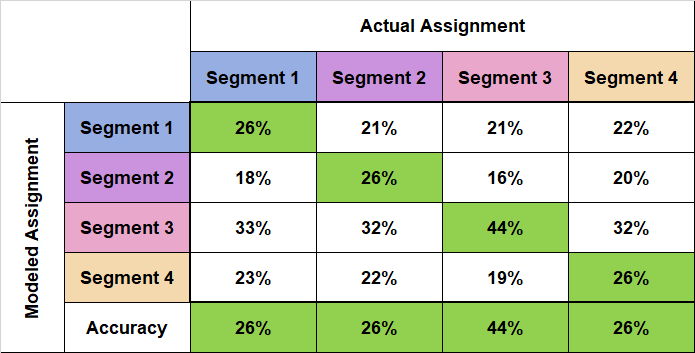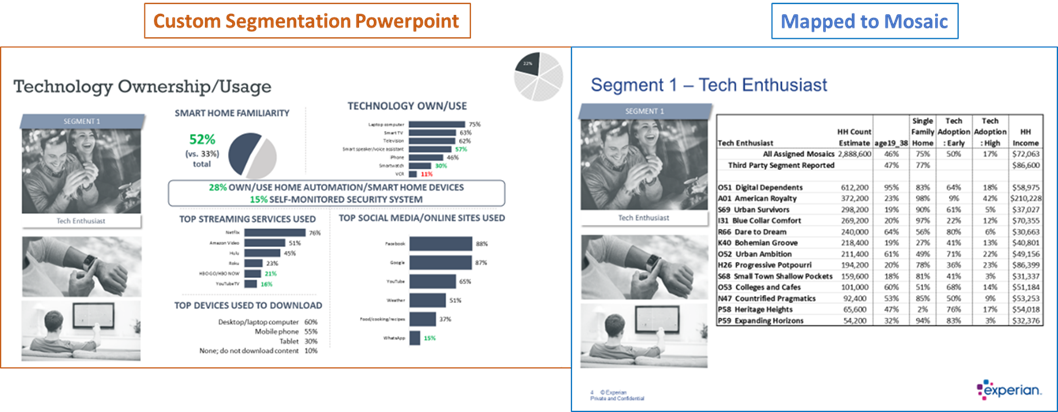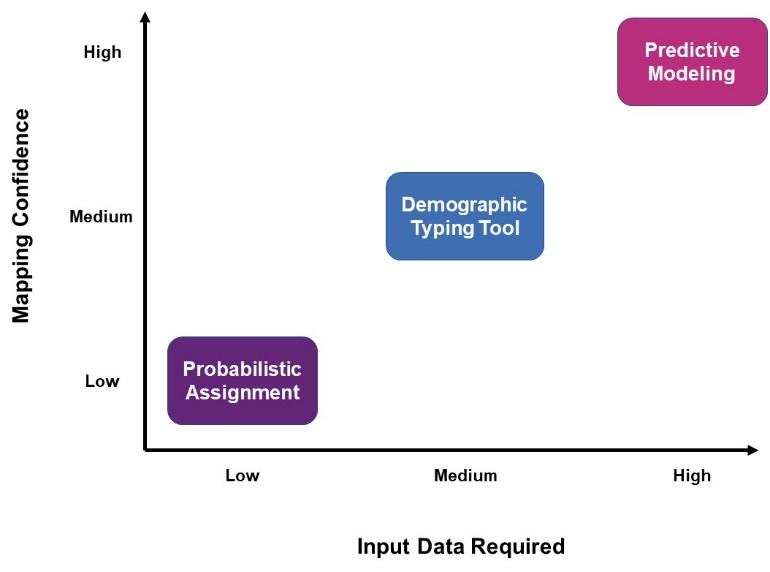
Customer segmentation is an essential component of the marketing manager’s toolkit. The best segmentation solutions provide insight and depth to the brand’s understanding of the customer and guidance to which prospects are most likely to contribute to brand growth. Knowing who these consumers are and what attracts them to a brand enables the marketer to personalize marketing content and persuade the consumer to purchase more effectively.
However, even a segmentation developed by a high-quality vendor can be frequently as much a dilemma as a solution. Most often, the underlying data or the algorithm assigning the segments are property of the vendor and may contain data points that are specific to a small number of consumers surveyed, and not the full population. This inhibits the marketer’s ability to leverage segmentation insights to improve targeting efficiency and communication effectiveness. But when segments are mapped to a prospect database like ConsumerViewSM, consumers can be segmented correctly, and communicated with the right messaging that will increase return on investment.
Experian Custom Analytics has experience in resolving this segmentation dilemma for clients in a variety of industry verticals. We have designed three distinct methods of mapping segments to a customer or prospect file, each a function of available data:
- Predictive Modeling
- Demographic Typing Tool
- Probabilistic Assignment
We will discuss these methods in further detail.
Predictive Modeling
Predictive modeling is the most rigorous approach. It provides the highest level of confidence at all levels of analysis and campaign execution, from the household up to zip code, market and region. The modeling approach requires a customer file with PII and the custom segment assignment. The PII is then matched to ConsumerView and the custom segments are profiled, compared to each other as well as the US population. An exploratory data analysis reveals the variables most likely to drive segment assignment. Regression analysis tests the significance of these variables and the models are finalized. The final product is a set of mathematical equations or “algorithm”, essentially appending the client’s custom segmentation to ConsumerView.

Demographic Typing Tool
PII is often not available, but the client or their vendor third party can provide some demographic specifics for the survey participants. The Demographic Typing Tool method can be used to find the most likely Mosaic types. Matching the respondent demographics, such as age, gender, income level, home ownership, presence of children, and most critically the respondent’s zip code, a unique combination or geographic “pixel” is constructed. We might imagine a 25-year-old female residing in zip code 60673 as a very simple example. Her Geopixel in this case could be 25_F_60673. We apply the same pixel definition to ConsumerView, count the matches by Mosaic group or type, and assign the most likely match to the respondent. More data points equate to greater precision. More respondents can somewhat make up for sparse data, but ideally the client could provide both.

Probabilistic Assignment
In some cases, only descriptive demographics are available, and Probabilistic Assignment can be applied to map custom segments to Mosaic. We have had successful mapping engagements with as little data as a PowerPoint presentation. If that presentation includes basic demographic distributions for the custom segments, as well as the proportional size of the segments, an equation can be developed that compares the probabilities of assignment to each segment. Consider a simple 2 segment case with two variables available, age and gender. Let’s further imagine half of 25-year olds in the client’s segmentation survey were assigned to Segment A and the other half to Segment B. Our 25-year-old Schaumburg female in the previous paragraph would then have a 50/50 chance of falling into segment A. But if we also know that 80% of females were assigned to segment B and that the second segment was also twice the size of the first, the probability of proper assignment to segment B becomes much higher. Thus, the more differentiation across segments the better.

Comparing the Methods
In all cases, we work with the client for a qualitative as well as quantitative solution. Segmentation is as much art as science so it logically follows that mapping to ConsumerView through modeling or to Mosaic groups and types must also include a qualitative element. The mapping needs to make sense when described in words and presented in images. More detailed data yields more precise results.
With PII and segment assignment for each customer, Predictive modeling, using ConsumerView assets, offers the highest level of statistical confidence. It can be applied to all marketing campaigns and channels. With at least some geographic and demographic information at the respondent level, the Demographic Typing Tool can be employed with at least medium confidence and is best applied to geographic level campaigns at the zip code or market level. More observations and more respondent data points will increase confidence at the household level. Probabilistic Assignment is the method used when only group level demographics are available. Confidence can range from relatively low to quite high but can still be a powerful tool for guiding market level campaigns. Confidence increases with higher levels of segment differentiation, more data points, and more precise data distributions.

Conclusion
Segmentation is a powerful marketing tool that enables the marketer to personalize marketing communication, increase marketing effectiveness and deliver an improved ROI. However, for personas to be successful, the marketer must be able to map these segments correctly to current or future customers, so that it can identify which consumers these segments represent and apply the correct communication tactic. Using one of these methods will ensure that maximum marketing value can be realized from these personas.